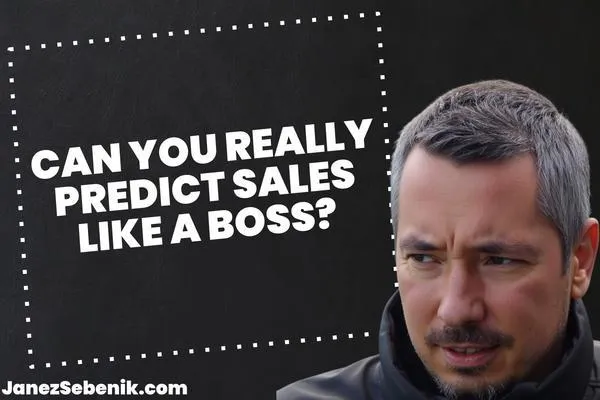
What are the five basic steps of demand forecasting?
Demand forecasting can make or break your business. It's not just about guessing how much stuff you'll sell. It's about being prepared for what's coming.
Think of it as a crystal ball for your company. You peek into the future and see what customers want. This helps you stock up on the right products and avoid wasting money on things that won't sell.
The five basic steps of demand forecasting are setting goals, gathering data, choosing a method, analyzing results, and putting findings into action. These steps help you predict customer needs and stay ahead of the competition.
Key Takeaways
Demand forecasting helps you prepare for future customer needs
Choosing the right forecasting method is crucial for accurate predictions
Regular monitoring and adjustments improve forecast accuracy over time
Understanding Demand Forecasting
Ever wonder how businesses seem to have just what you need, right when you need it? That's demand forecasting in action, baby!
It's all about predicting future demand for products or services. Think of it as a crystal ball for your business.
You've got two main flavors: active and passive forecasting. Active is when you roll up your sleeves and get involved. Passive? That's letting past trends do the talking.
Short-term forecasting helps you plan for the next few months. Long-term? That's your five-year vision board stuff.
Here's a quick breakdown:
Macro-level: Big picture economics
Short-term: What's hot right now
Long-term: Where's the market heading
Demand planning is like being a weather forecaster for your business. You're looking at patterns, trends, and gut feelings to make smart calls.
Remember, forecasting isn't just guesswork. It's a mix of art and science. You're crunching numbers, reading the room, and sometimes, going with your instincts.
So, next time you see a store stocked with exactly what you want, give a little nod. That's demand forecasting working its magic!
Data Gathering
Gathering the right data is crucial for accurate demand forecasting. You'll need to look at internal numbers, external market info, and customer insights. Let's break it down.
Internal Data Analysis
First up, dive into your own data. Look at your historical sales records. They're gold for spotting trends.
Check out your inventory levels too. Are certain products flying off the shelves? That's valuable info.
Don't forget about your sales data. It's not just numbers - it's a story of what's working and what's not.
Preparing and using data is key. Get your team on board. When everyone understands the importance, they'll help keep the data clean and useful.
External Market Insights
Now, let's look outside your business. Market research is your best friend here.
Keep an eye on economic indicators. They can signal shifts in buying power.
Watch for market trends. What's hot right now? What's cooling off?
Consumer trends matter too. Are people going green? Buying local? These shifts can impact your demand.
Remember, demand forecasting uses historical data to predict the future. But don't ignore current market conditions. They're crucial for accurate predictions.
Customer-Centric Information
Finally, focus on your customers. They're the reason you're in business, after all.
Run customer surveys. Ask what they want, what they like, what they don't.
Track customer behavior. Are they buying more online? Prefer in-store shopping?
Look at customer satisfaction scores. Happy customers often mean repeat business.
Customer demand is at the heart of forecasting. The more you understand your customers, the better your predictions will be.
Remember, good data leads to good forecasts. And good forecasts lead to happy customers and a thriving business. It's a win-win.
Choosing the Right Forecasting Method
Picking the right forecasting method can make or break your demand predictions. You've got options, and each has its strengths. Let's break it down so you can nail your forecasts.
Qualitative Versus Quantitative
Qualitative methods rely on expert opinions and gut feelings. Think of it like asking your grandma for her secret recipe - it's all about experience.
Quantitative methods, on the other hand, are all about the numbers. It's like following a recipe to the letter, measuring every ingredient.
Qualitative forecasting includes the Delphi method and market research. These work great when you're dealing with new products or markets.
Quantitative methods like time series analysis and regression models are your go-to for established products with solid historical data.
Digging Into Quantitative Techniques
Quantitative techniques are your best friend when you've got data to work with. They're like a crystal ball, but powered by math.
Time series analysis looks at past trends to predict the future. It's like checking your watch to guess what time it'll be in an hour.
Regression analysis finds relationships between variables. For example, how ice cream sales spike when it's hot outside.
Econometric models take it a step further. They consider broader economic factors that might impact demand.
Applying Qualitative Judgment
Sometimes, numbers aren't enough. That's where qualitative methods come in handy.
The Delphi method taps into expert opinions. It's like getting advice from a bunch of wise owls.
Market research helps you understand what customers want. It's like being a mind reader, but with surveys and focus groups.
Sales force composites gather insights from your frontline team. They're the ones talking to customers every day, after all.
Remember, the best forecasts often use a mix of methods. It's like making a smoothie - blend different ingredients for the perfect result.
Analyzing and Interpreting Data
Once you've got your data, it's time to make sense of it. Let's break down how to squeeze every bit of insight from those numbers.
Sales and Market Trend Analysis
You gotta know where you've been to figure out where you're going. Start by looking at your past sales. Spot any patterns? Maybe you sell more ice cream in summer. Duh, right?
But dig deeper. Are certain products flying off the shelves? Why? Is it because of a viral TikTok trend? Or did your competitor's factory burn down?
Don't just look at your own stuff. Check out market trends too. What are people buying? What's hot and what's not? This isn't just guesswork - it's your crystal ball for future demand.
Statistical and Econometric Modeling
Okay, time to get a bit nerdy. But stay with me, it's worth it. Statistical modeling is like giving your data superpowers.
You've got regression analysis. It helps you figure out how different factors affect your sales. Price goes up, sales go down. But by how much? This tells you.
Then there's econometric forecasting. Sounds fancy, right? It's just using economic theory to predict future demand. Like how a recession might tank your luxury yacht sales.
These models help you make sense of all that data you've collected. They turn numbers into actionable insights. Pretty cool, huh?
Technology and Machine Learning
Welcome to the future, baby! Machine learning and AI are changing the game in demand forecasting.
These smart systems can crunch way more data than your brain ever could. They spot patterns you'd miss. And they keep learning and improving over time.
You feed in your sales data, market trends, even stuff like weather forecasts or social media buzz. The AI works its magic and spits out predictions.
But remember, machines aren't perfect. You still need your human smarts to interpret the results. Think of AI as your super-smart assistant, not your replacement.
Implementation and Monitoring
You've got your forecast. Now what? Time to put it into action and keep a close eye on things. Let's dive into how you can make your predictions work for you and stay on top of changes.
Actionable Demand Planning
Got your forecast? Great! Now it's time to use it. Set up inventory management systems that match your predictions. Don't let products gather dust or run out of stock.
Sync up your production planning with expected demand levels. This way, you're not making too much or too little. Smart, right?
Use demand forecasting software to keep everything organized. It'll help you spot trends and make quick decisions. Plus, it's way easier than juggling spreadsheets.
Remember, your forecast is a tool. Use it to guide your choices, not dictate them. Stay flexible and ready to adapt.
Continuous Review and Adjustment
Forecasts aren't set in stone. They're more like Play-Doh - always ready to be reshaped. Keep an eye on your forecasting accuracy. How close are your predictions to reality?
Check your numbers regularly. Weekly, monthly, whatever works for your business. The point is to stay on top of things.
See a gap between forecast and actual demand? Don't panic. It's a chance to learn and improve. Figure out why there's a difference.
Maybe your data was off. Or maybe there's a new trend you didn't catch. Whatever it is, use this info to tweak your forecasts.
Remember, the goal is to get better over time. Each adjustment brings you closer to nailing those predictions. Keep at it!
Impact on Business Decisions
Demand forecasting shapes your entire business strategy. It's the crystal ball that helps you make smart moves. Let's dive into how it affects key areas of your business.
Pricing and Revenue
You want to make money, right? Of course you do. That's where demand forecasting comes in clutch. It helps you set prices that maximize your profits.
If you know demand is going up, you can raise prices. Cha-ching! But if it's dropping, you might need to offer deals to keep sales flowing.
Your pricing strategy isn't just guesswork anymore. It's based on cold, hard data. You can predict how many people will buy at different price points. This helps you find that sweet spot where you make the most cash.
Resource and Inventory Management
Ever had too much stock sitting around? Or worse, run out of a hot item? Demand forecasting helps you avoid both headaches.
You'll know exactly how much inventory to keep. No more wasting money on overstocking or losing sales from stockouts.
It also helps with staffing. You'll know when you need extra hands on deck for busy periods. And when things slow down, you won't have workers twiddling their thumbs.
Your supply chain becomes a well-oiled machine. You order materials just in time, keeping costs down and efficiency up.
Marketing and Growth Strategy
Want to crush your marketing campaigns? Demand forecasting is your secret weapon.
You'll know when demand is likely to spike. That's when you ramp up your marketing efforts for maximum impact.
It also helps you spot new opportunities. Maybe you notice demand rising in a new market. Boom! Time to expand.
For startups, it's a game-changer. You can predict how fast you'll grow and plan accordingly. No more flying blind.
You'll also see which products are trending up or down. This helps you focus your efforts where they'll pay off most.
